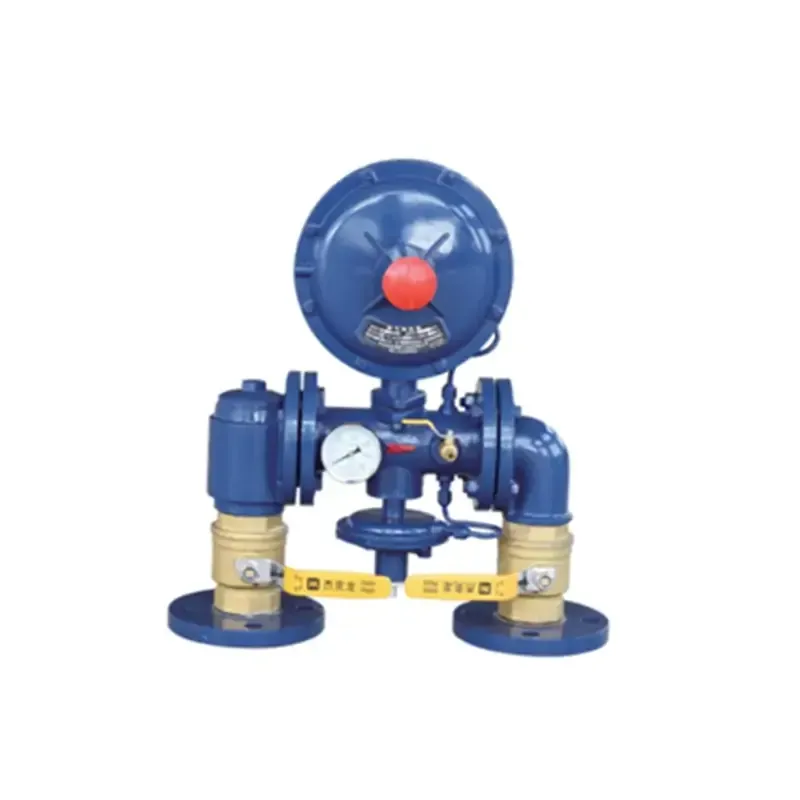
Dec . 20, 2024 23:20
Back to list
صمام تخفيض ضغط الغاز
Understanding Gas Pressure Reduction Valves
Gas pressure reduction valves (GPRVs) play a critical role in the safe and efficient transportation and usage of gas in various applications. Whether in residential, commercial, or industrial settings, these valves ensure that gas is delivered at a consistent and manageable pressure, preventing potential hazards linked to excessive pressure levels.
What is a Gas Pressure Reduction Valve?
A gas pressure reduction valve is a mechanical device that reduces and regulates the pressure of gas flowing from a high-pressure source to a lower, usable pressure. This allows users to safely utilize gas for various applications, such as heating, cooking, and industrial processes. GPRVs are essential in maintaining the integrity of the gas delivery system, ensuring that the pressure remains within safe limits to prevent leaks, bursts, or other dangerous situations.
Types of Gas Pressure Reduction Valves
GPRVs come in various types, each designed to cater to specific needs and applications. The most common types include
1. Single-Stage Pressure Regulators These are used for applications where the inlet pressure is relatively constant. They reduce high inlet pressure to a lower outlet pressure in one step. 2. Two-Stage Pressure Regulators These are more complex and are used when the inlet pressure can vary significantly. The first stage reduces the pressure to an intermediate level, while the second stage reduces it to the desired outlet pressure.
3. Back Pressure Regulators These are used to maintain a set pressure on the discharge side of the valve, allowing for more consistent delivery.
4. Relief Valves While not standard pressure regulators, relief valves play a critical safety role. They allow excess pressure to escape if it exceeds a predetermined limit, thereby protecting the system.
.
The applications of GPRVs are vast, spanning residential, commercial, and industrial sectors
صمام تخفيض ضغط الغاز

- Residential Use In homes, GPRVs are used to ensure that gas appliances, such as stoves and water heaters, receive gas at the correct pressure. This not only maximizes efficiency but also ensures safety by preventing dangerous surges in pressure.
- Commercial Use In commercial settings like restaurants and hotels, GPRVs are essential for the operation of multiple gas appliances. They help maintain consistent functioning and minimize the risk of pressure-related issues.
- Industrial Use In factories and large manufacturing facilities, GPRVs are critical for various processes that depend on gas. Whether for heating, powering machinery, or as a feedstock in chemical processes, these valves ensure that systems operate within safe pressure limits.
Benefits of Using Gas Pressure Reduction Valves
1. Safety GPRVs significantly increase the safety of gas systems by regulating pressure and preventing potential hazards like explosions or fires caused by overly high gas pressures.
2. Efficiency By managing gas pressure, GPRVs help optimize the performance of gas appliances and equipment, leading to lower energy costs and improved operational efficiency.
3. Longevity of Equipment Maintaining appropriate gas pressure reduces wear and tear on appliances, extending their lifespan and reducing maintenance costs.
4. Compliance with Regulations Many jurisdictions require the use of pressure reduction valves to comply with safety codes and regulations, making them a legal necessity in many cases.
Conclusion
In summary, gas pressure reduction valves are vital components in gas supply systems, ensuring safety, efficiency, and compliance across various applications. By controlling gas pressure, they help prevent hazardous situations, optimize appliance performance, and enhance the overall reliability of gas distribution networks. As technology advances, the design and functionality of GPRVs continue to evolve, further improving their efficacy and safety in the gas industry. Understanding their importance is crucial for anyone involved in the management or use of gas systems.
Next:
Latest news
-
Safety Valve Spring-Loaded Design Overpressure ProtectionNewsJul.25,2025
-
Precision Voltage Regulator AC5 Accuracy Grade PerformanceNewsJul.25,2025
-
Natural Gas Pressure Regulating Skid Industrial Pipeline ApplicationsNewsJul.25,2025
-
Natural Gas Filter Stainless Steel Mesh Element DesignNewsJul.25,2025
-
Gas Pressure Regulator Valve Direct-Acting Spring-Loaded DesignNewsJul.25,2025
-
Decompression Equipment Multi-Stage Heat Exchange System DesignNewsJul.25,2025

